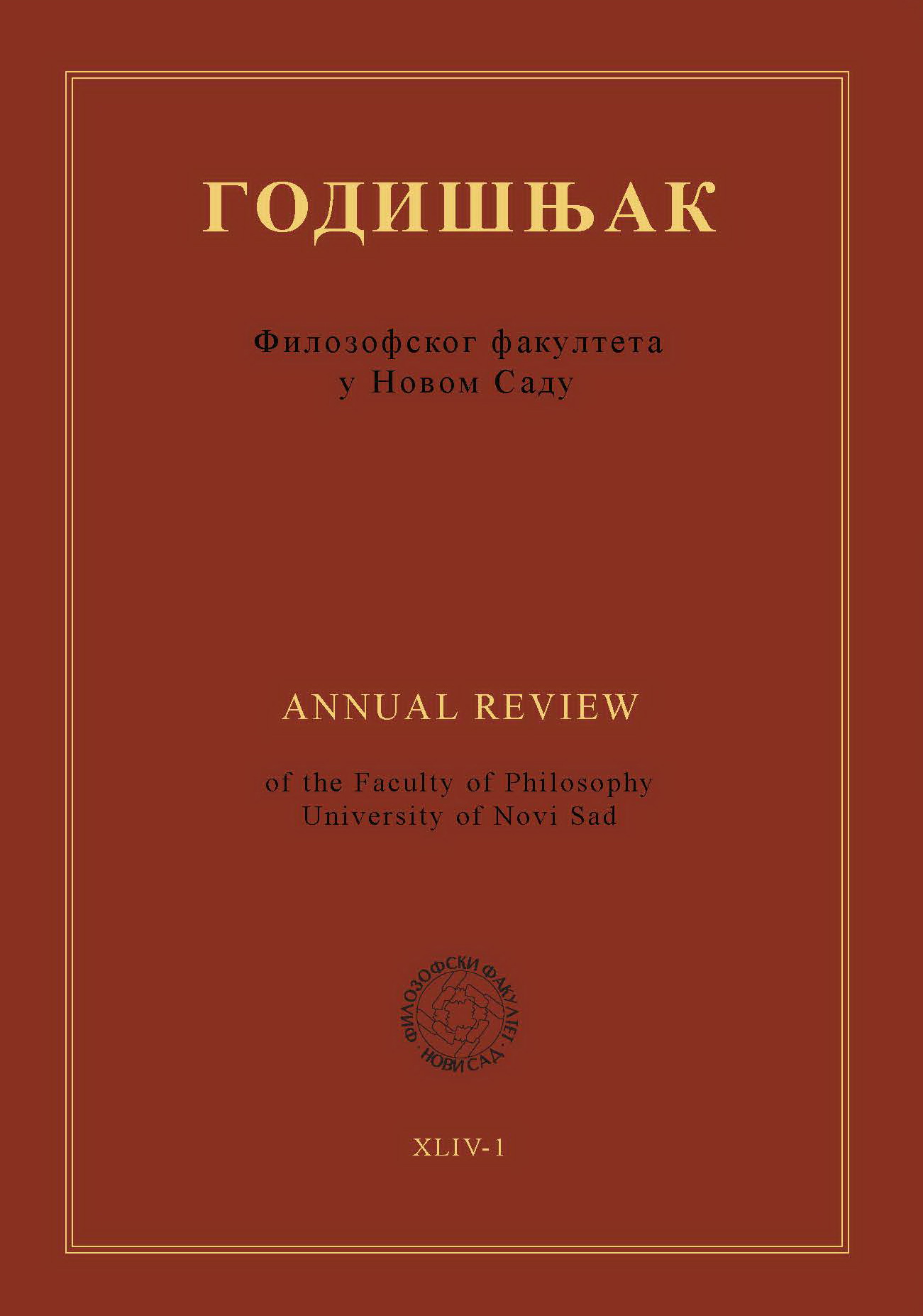FOOD AND EATING AS A SOCIOLOGICAL PROBLEM – AN OLD ISSUE OR A NEW DISCIPLINE?
Main Article Content
Abstract
For the last several decades, sociological interest in researching food systems, food regimes and foodways increases. In researching food, sociology relies both on other sciences (such as history, anthropology, ethnology, agrotechnology, agrieconomics, psychology,nutritional sciences, genetics), well established sociological disciplines (sociology of labour/family, rural sociology), but also emerging ones (sociology of tourism/emotions). Despite significant progress in development of sociological knowledge on food and eating (concepts, different theoretical aproaches, methods, institutionalisation), we are still arguing whether a) are we talking of an old or a new sociological topic and b) are we dealing with the emerging sociological discipline or just another sociological issue. Presented dilemmas are accompanied by a seria of additional issues such as justification of sociological approach in food studies, sociological contributions to the food reseaarch, but also sociological knowledge in general. Also, there is a question whether and how sociological knowledge can help in developing various public policies relationg food and eating. This paper is an attempt to provide additional insight into abovementioned issues and dilemmas.
Downloads
Article Details
References
2. Beardsworth, A. –Bryman, A. –Keil, T. –Goode, J. –Haslam, C. & Lancashire, E. (2002). Women, men and food: the significance of gender for nutritional attitudes and choices. British Food Journal, 104 (7): 470-491.
3. Bennett, J. –Smith, H. & Passin, H. (1942). Food and culture in Southern Illinois - a preliminary report. American Sociological Review, 7 (5): 645-660.
4. Bernstein, H. (2015). Food Regimes and Food Regime Analysis: A Selective Survey. BICAS Working Papers 2. Preuzeto sa: https://www.tni.org/files/download/bicas_working_paper_2_bernstein.pdf.
5. Boswell, J. (1991). The Journals of James Boswell 1762-95. USA: Yale University Press.
6. Bronson, K.–Knezevic, I. (2016). Big data in food and agriculture. Big data & Society, 3 (1): 1-5. https://doi.org/10.1177/2053951716648174.
7. Delormier, T. –Frohlich, K. & Potvin, L. (2009). Food and eating as social practice - Understanding eating patterns as social phenomena and implications for public health. Sociology of Health and Illness, 31 (2): 215-28. doi: 10.1111/j.1467-9566.2008.01128.x.
8. Dirkem, E. (1982). Elementarni oblici religijskog života: totemistički sistem u Australiji. Beograd: Prosveta.
9. Belton, P. (1998). Science in the postmodern world. In: Belton, P. & Belton, T. (eds.) (1998). Food, science and society – exploring the gap between expert advice and individual behavior. New York: Springer. 1-19.
10. Edge, J. (2007). Southern belly: A food lover's companion. USA: Algonquin Books.
11. Engels, F. (2018). Položaj radničke klase. Novi Sad: Mediterran publishing.
12. Evers, S. –McIntosh, A. (1977). Social Indicators of Human Nutrition: Measures of Nutritional Status. Social indicators research, 4 (1): 185-205.
13. Friedman, H. –MacMichael, P. (1989). Agriculture and the state system - the rise and decline of national agricultures, 1870 to the present. Sociologia ruralis, 39 (2): 93-117. https://doi.org/10.1111/j.1467-9523.1989.tb00360.x.
14. Germov, J. –Williams, L. (2017) A sociology of food and nutrition – the social appetite. Australia: Oxford University Press.
15. Gregory, S. (1995). Using qualitative research for the sociology of food. British food journal, 97 (7): 32-35. https://doi.org/10.1108/00070709510095430.
16. Levi-Stros, K. (1980). Mitologike. Beograd: Prosveta BIGZ.
17. MacMichael, P. (2009). A food regime genealogy. The journal of peasant studies, 36 (1): 139-169. doi: 10.1080/03066150902820354.
18. Malinowski, B. (1935). Coral gardens and their magic. London: George Allen &Unwin Ltd.
19. Marvin, H. –Janssen, E. –Bouzembrak, Y. –Hendriksen, P. & Staats, M. (2017). Big data in food safety: An overview. Critical Reviews in Food Science and Nutrition, 57 (11): 2286-2295. doi: 10.1080/10408398.2016.1257481.
20. Mennel, S.–Murcott, A. & van Otterllo, A. (1998). Prehrana i kultura - sociologija hrane. Zagreb: Jesenski i Turk.
21. Mos, M. (1982). Sociologija i antropologija. Beograd: Prosveta.
22. Naj, Dž. (2012). Budućnost moći. Beograd: Arhipelag.
23. Organ, C. –Nunn, C. –Machanda, Z. & Wrangham, R. (2011). Phylogenetic rate shifts in feeding time during the evolution of Homo, PNAS, 108 (35): 14555-14559; https://doi.org/10.1073/pnas.1107806108.
24. Sobal, J. –McIntosh, A. & Whit, W. (1993). Teaching the Sociology of Food, Eating, and Nutrition. Teaching Sociology, 21 (1): 50-59.
25. van Eeuwijk, P. (2007). The power of food: mediating social relationships in the care of chronically ill elderly people in urban Indonesia, Anthropology of food. Preuzeto sa: http://journals.openedition.org/aof/2052.
26. Veblen, T. (2008). Teorija dokoličarske klase. Novi Sad: Mediterran publishing.
27. Vivero Pol, J. L. (2015). Food is public good. World Nutrition, 6 (4): 306-329.
28. Weber, M. (2013). The agrarian sociology of ancient civilization. London – New York: Verso.
29. Willis, W. –Dickinson, A. –Meah, A. & Short, F. (2016). Reflections on the use of visual methods in a qualitative study of domestic kitchen practices. Sociology, 50 (3): 470-485. doi.org/10.1177/0038038515587651.
30. Zimel, G. (2001). Kontrapunkti kulture. Zagreb: Jesenski i Turk.
1. http://www.rachellaudan.com/2017/02/19542.html. Preuzeto: 25.01.2019.
2. https://wg05.my-free.website/. Preuzeto: 25.01.2019.
3. https://www.europeansociology.org/research-networks/rn05-sociology-consumption. Preuzeto: 25.01.2019.
4. https://www.isa-agrifood.com/about. Preuzeto: 25.01.2019.




